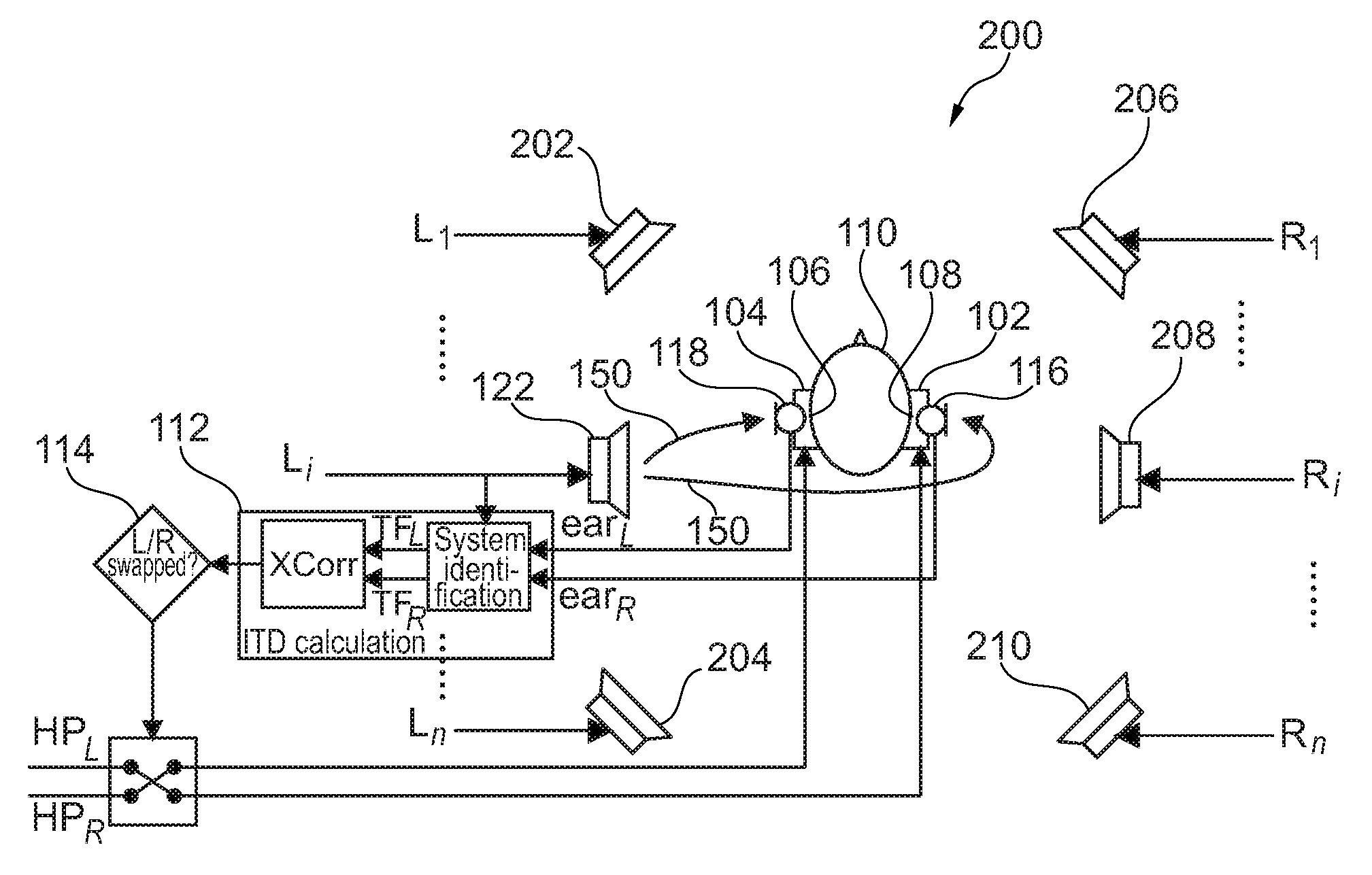Device for and a method of processing audio data
a technology of audio data and processing method, which is applied in the direction of electronic input selection/mixing, loudspeakers, stereophonic circuit arrangements, etc., can solve the problems of inconvenient user searching for the indications of each channel, not convenient for the user to swap channels inadvertently, and affecting the overall experience of the user, etc., to achieve convenient use for the listener
- Summary
- Abstract
- Description
- Claims
- Application Information
AI Technical Summary
Benefits of technology
Problems solved by technology
Method used
Image
Examples
Embodiment Construction
[0042]The illustration in the drawing is schematically. In different drawings, similar or identical elements are provided with the same reference signs.
[0043]According to an exemplary embodiment of the invention, an automatic left / right headphone inversion detection, for instance for rear-seat entertainment headphones, may be provided. An embodiment provides a system for automatically detecting left / right inversion for instance for Active Noise Reduction headphones used for in-car rear-seat entertainment. Such a system may exploit the fact that microphones on a headset (one on each side of the listener's head) are surrounded by loudspeakers from the car audio installation that are playing known signals. It may make it possible to monitor the acoustical paths between one (or more) of those loudspeakers and the two headset microphones. For each loudspeaker, the least delayed microphone should be the one on the same side as the loudspeaker. If not, it indicates that the headphone is sw...
PUM
 Login to View More
Login to View More Abstract
Description
Claims
Application Information
 Login to View More
Login to View More - R&D
- Intellectual Property
- Life Sciences
- Materials
- Tech Scout
- Unparalleled Data Quality
- Higher Quality Content
- 60% Fewer Hallucinations
Browse by: Latest US Patents, China's latest patents, Technical Efficacy Thesaurus, Application Domain, Technology Topic, Popular Technical Reports.
© 2025 PatSnap. All rights reserved.Legal|Privacy policy|Modern Slavery Act Transparency Statement|Sitemap|About US| Contact US: help@patsnap.com



